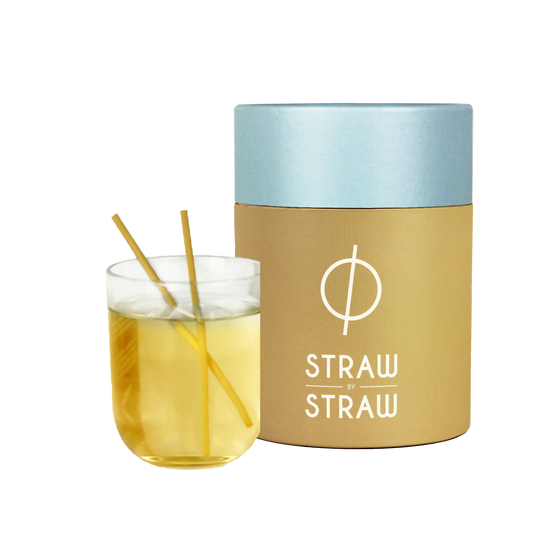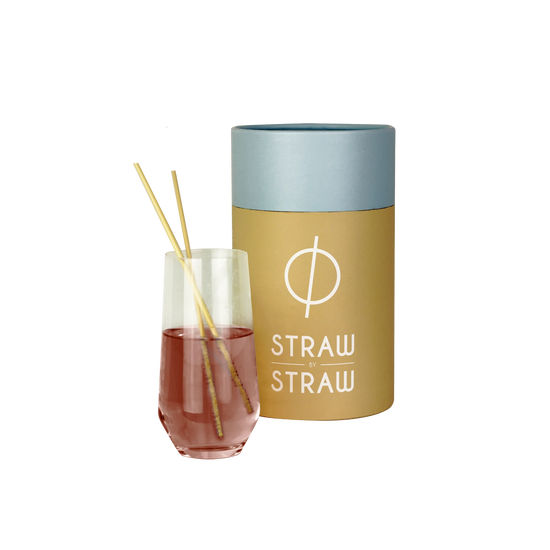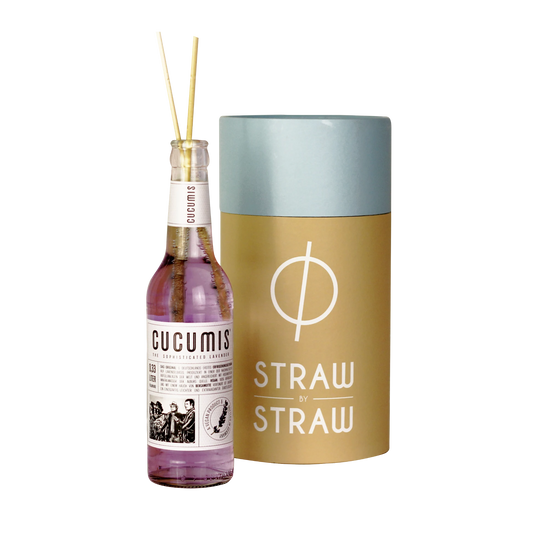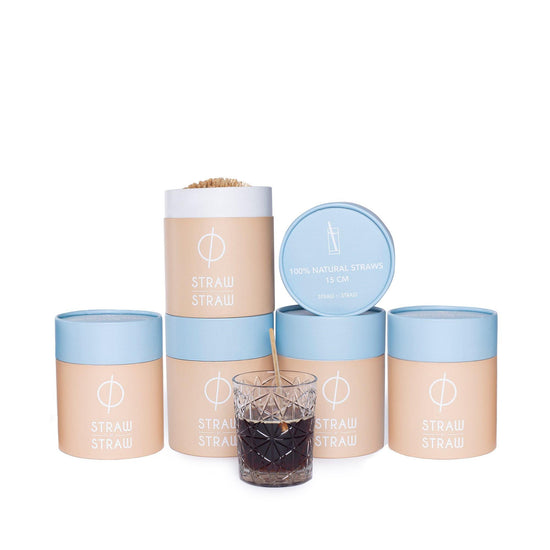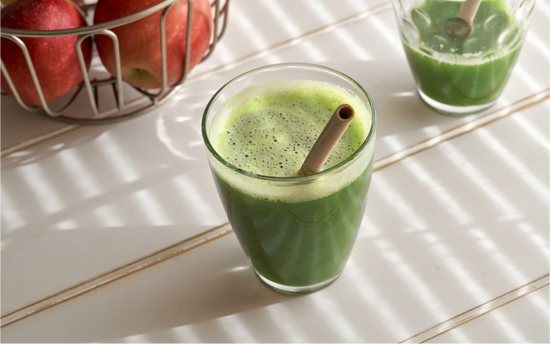Which Alternative to Plastic Straws Suits You Best?
What kind of straws are best for your bar? As of July 3, 2021, a plastic ban is in effect across Europe. In some cities and countries, the ban on plastic disposable products is already in place, but you might still be searching for good alternatives.
From disposable paper straws to reusable bamboo straws, there are many alternatives. But which option should you choose? Here's what you should consider:
Disposable Straws or Reusable Straws?
Do you prefer reuse, or do you prefer disposable straws so you don't have to clean them? Reusable straws such as glass, metal, or bamboo straws are ideal if you want to reuse them. They look nice, and you only need to purchase them occasionally because they are reusable. However, you need to clean them thoroughly, for example, with a straw brush, to ensure they meet hygiene standards. Disposable straws also come in a variety of materials, styles, and options. The advantage is that they are cheaper per piece than reusable straws. Some may initially seem sustainable, and you can often dispose of them with organic waste. If you prefer this option, make sure to research the material of these eco-friendly straws carefully.
Sturdiness
Is it important to you that a straw remains sturdy in any drink without becoming soggy? If so, pay close attention to the material. In each section below, you’ll find a description and explanation of each type of straw.
Presentation
How do you present each drink? Are certain colors important to you because they better match your cocktails, for example? Or do you prefer a sustainable appearance?
Eco-Friendliness
There are various alternatives to plastic straws, and there is also a lot of confusion: biobased straws, compostable straws, biodegradable straws, recyclable straws, and so on. For example, some paper straws have a coating to make them a bit sturdier, so pay close attention to the material. PLA straws made from lactic acid need to be composted. But do you have access to a composting facility, or can you easily dispose of these straws?
Reusable Straws
1. Glass Straws
Advantages: These straws often look very chic! They are beautifully transparent, allowing you to see if they are clean inside.
Disadvantages: The downside of glass straws is that they can break since they are made of glass. Additionally, the straws need to be thoroughly cleaned after use.
2. Metal Straws
Advantages: These straws also look great and are trendy. They are available in a wide range of colors: black metal, rainbow, gold, and silver. The shiny look makes every cocktail sparkle.
Disadvantages: They look so nice that guests sometimes take them home. Additionally, you need to ensure they are thoroughly cleaned. Because these straws are not transparent, you can't easily see if they are clean inside for the next user.
3. Bamboo Straws
Advantages: Bamboo straws offer an eco-friendly presentation with every drink. Due to their material and color, bamboo straws are immediately recognizable as environmentally friendly.
Disadvantages: Bamboo straws are sometimes quite thick, making them less comfortable for drinking. Since bamboo is a type of wood, moisture can eventually seep into the straw, making it less appealing. You may need to replace them from time to time. These straws also need to be thoroughly cleaned after use.
Sustainable Disposable Straws
4. Paper Straws
Advantages: Paper straws are available in all colors and sizes. They are often beautifully decorated with colorful prints, making every drink look cheerful.
Disadvantages: Paper straws quickly become soft in drinks. The straw becomes limp, making it difficult to sip. If they stay in the drink for a bit longer, pieces of paper may end up in the drink, which doesn't look very appealing after a while. Additionally, paper straws can impart a "papery" taste when drinking.
;
5. PLA Straws
Advantages: PLA straws look and feel like plastic. They are sturdy and don't become soft in drinks like paper straws. They are made of cornstarch and are biodegradable.
Disadvantages: Although these straws are biodegradable, they still need to be composted. The straws should only be disposed of at a composting facility. Because they look like plastic straws, they might be mistakenly thrown in the plastic waste bin. Additionally, the straws can only be composted in a commercial composting facility where temperatures reach at least 50°C. If they are just discarded, they will not decompose. PLA straws are also not suitable for drinks warmer than 45°C. PLA straws are therefore less suitable for coffee and other hot beverages.
6. Edible Straws
Advantages: As the name suggests, edible straws can be eaten after finishing your drink. Often made from materials such as pasta, they are a real surprise for guests. The straws are also sturdy in drinks.
Disadvantages: These straws can taste bland if consumed after use. Additionally, some guests may feel uncomfortable eating their straws.
7. Wheat Straws
Advantages: Wheat straws are a real eye-catcher, perfect for creating a rustic atmosphere in your establishment. They can be used in hot beverages.
Disadvantages: Since they are made of wheat, the straws are hollow and thin. While they look nice, they may not be suitable for thicker drinks like smoothies.
8. Rice Straws
Advantages: Rice straws are the latest trend. They can withstand hot beverages for up to two hours without getting soggy and are suitable for all types of drinks. After use, they are biodegradable.
Disadvantages: These straws are relatively expensive compared to other alternatives. Additionally, the selection of rice straws in different colors and sizes is still quite limited.
9. Grass Straws
Advantages: These straws, made from grass, offer a completely sustainable solution. They are 100% natural and biodegradable.
Disadvantages: Grass straws may have a subtle grassy taste, which might not be suitable for all beverages. Also, they may not be as durable as other alternatives and might break or become soggy with extended use.



